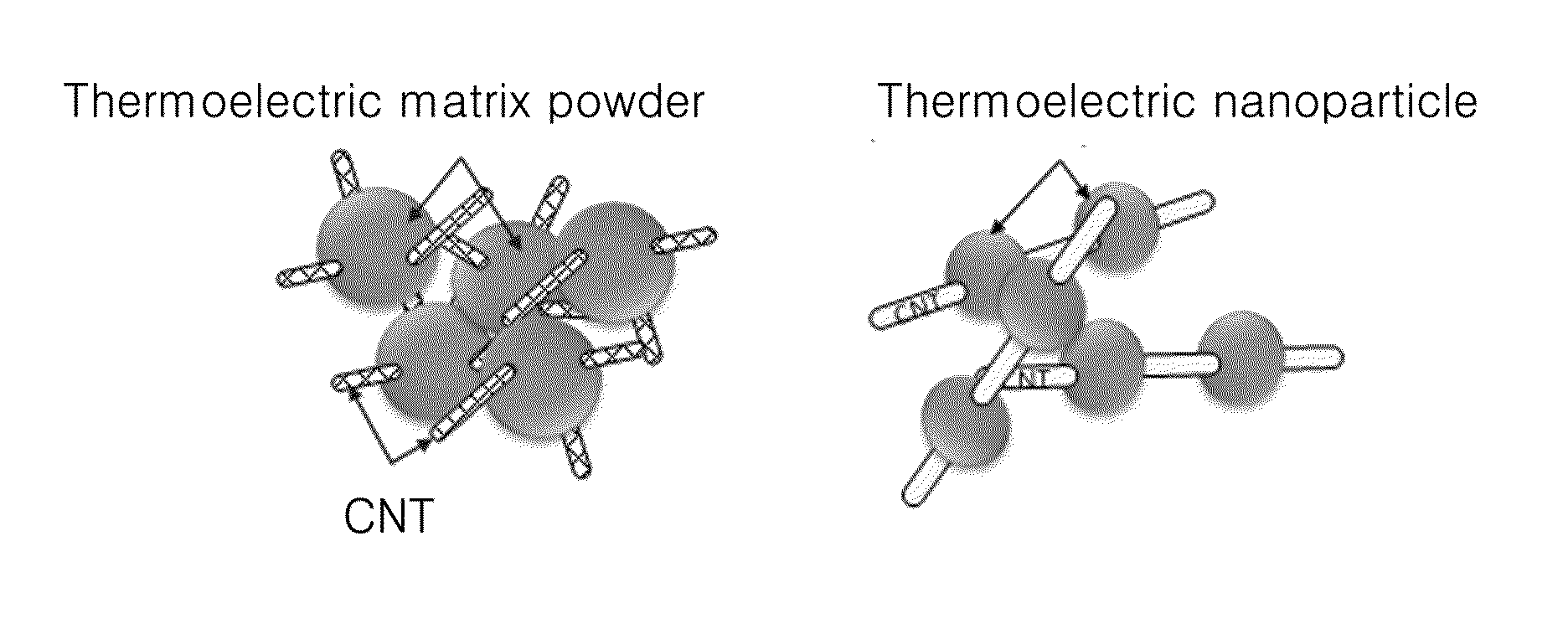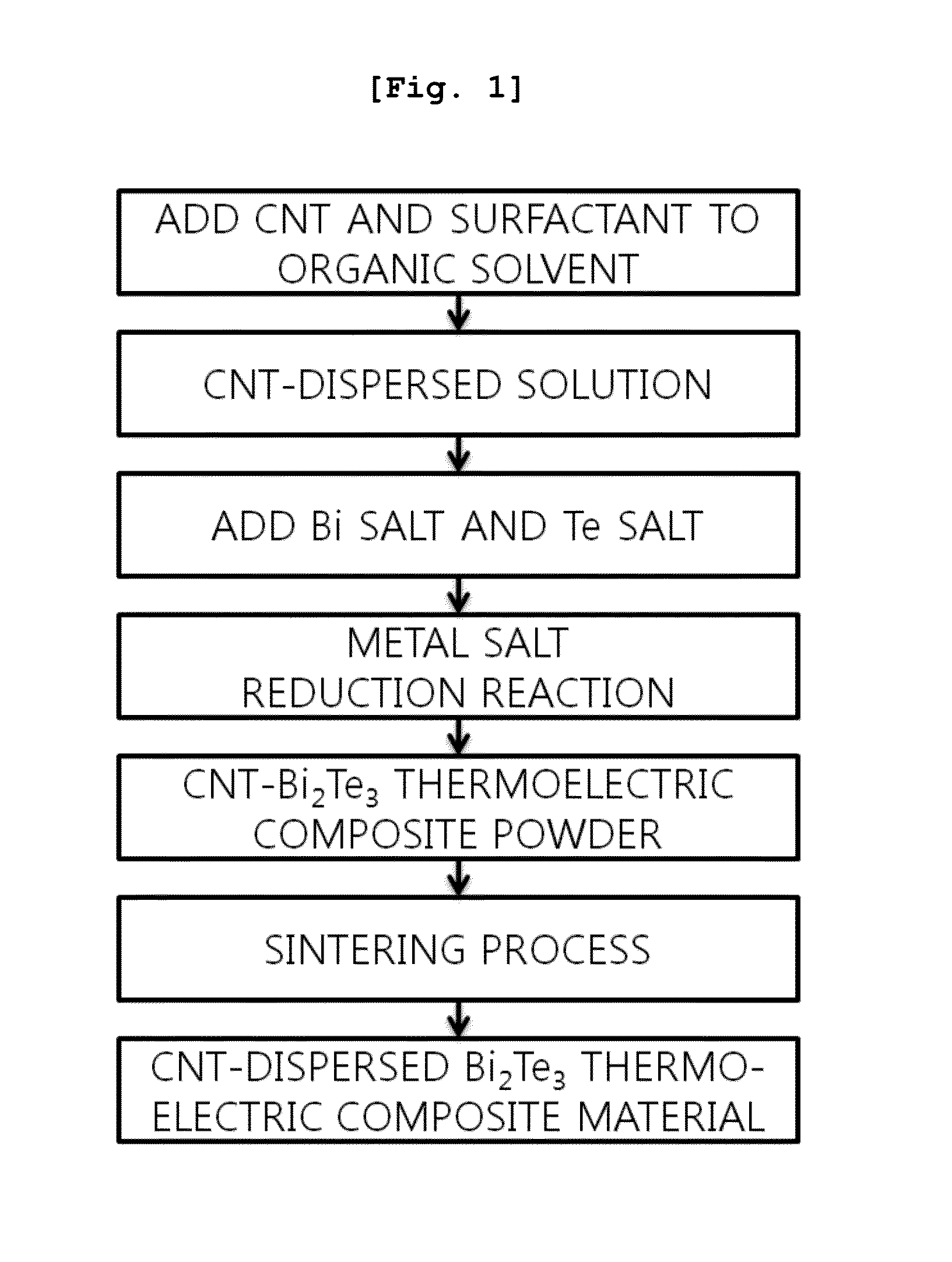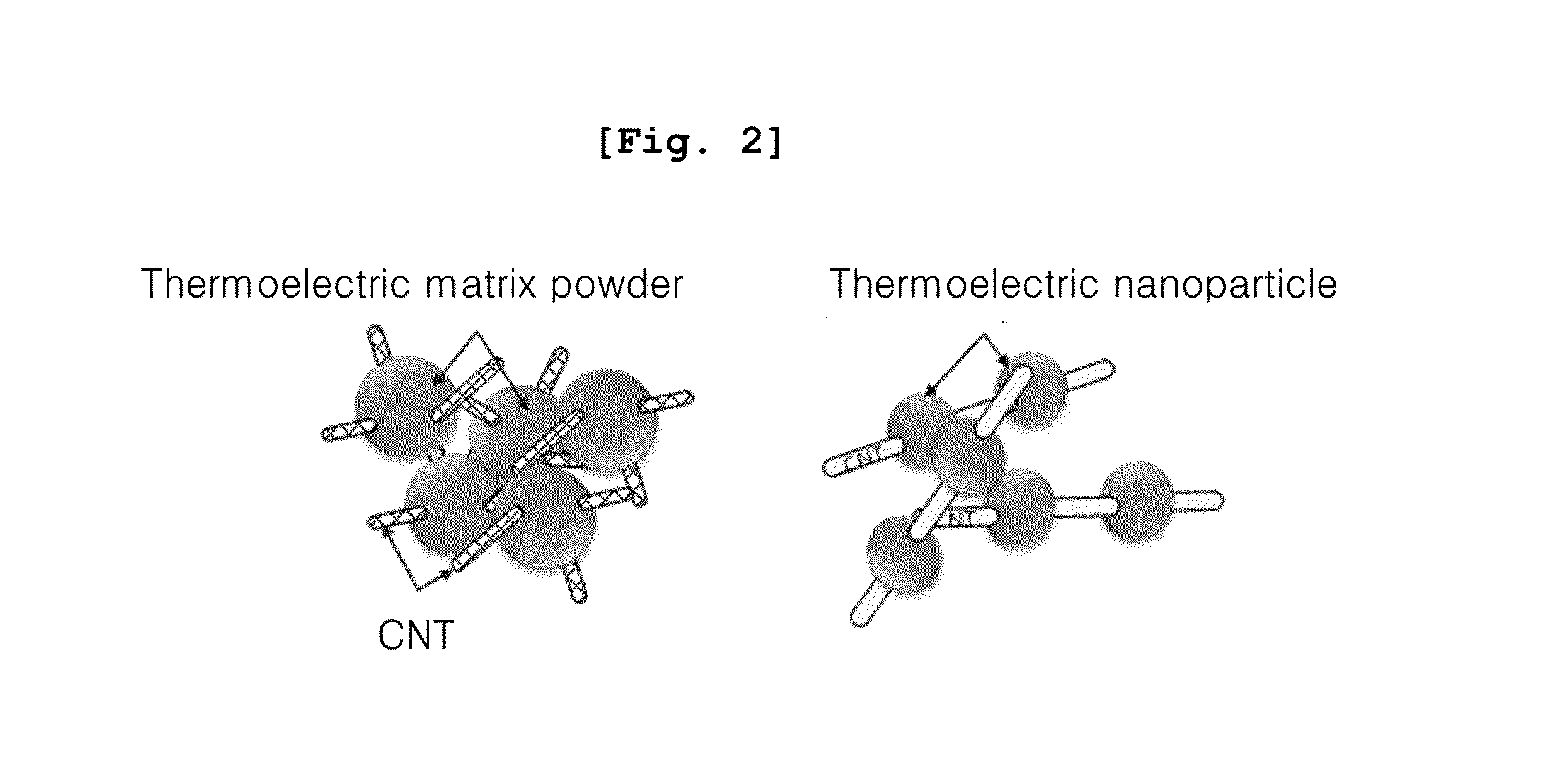Method of fabricating thermoelectric material and thermoelectric material fabricated thereby
a thermoelectric material and thermoelectric material technology, applied in the manufacture/treatment of thermoelectric devices, electrical apparatus, nanotechnology, etc., can solve the problems of reducing the electrical conductivity of carbon nanotubes and the electric conductivity of thermoelectric materials, so as to improve the economic factors related to material costs, reduce power, and reduce the effect of thermal conductivity
- Summary
- Abstract
- Description
- Claims
- Application Information
AI Technical Summary
Benefits of technology
Problems solved by technology
Method used
Image
Examples
example 1
[0059]Step 1: 1 mg of carbon nanotubes (diameter: 10 nm to 40 nm, length: average 5 μm, Hanwha Nanotech) was introduced with ml of oleylamine as a surfactant into 4.5 ml of 1-dodecanethiol to prepare a colloidal solution having carbon nanotubes dispersed therein.
[0060]Step 2: 0.153 g of bismuth acetate [Bi(CH3COO)3] and 0.162 g of tellurium chloride [TeCl4] (Sigma Aldrich Co., Ltd.) as metal salts having thermoelectric properties were added to the colloidal solution prepared in step 1.
[0061]Step 3:a chemical reaction was performed by heating the solution having the metal salts added thereto at 110° C. for 2 hours to precipitate Bi2Te3 on outer surfaces of the carbon nanotubes and thus, a thermoelectric material was fabricated.
PUM
| Property | Measurement | Unit |
|---|---|---|
| temperature | aaaaa | aaaaa |
| size | aaaaa | aaaaa |
| size | aaaaa | aaaaa |
Abstract
Description
Claims
Application Information
 Login to View More
Login to View More - R&D
- Intellectual Property
- Life Sciences
- Materials
- Tech Scout
- Unparalleled Data Quality
- Higher Quality Content
- 60% Fewer Hallucinations
Browse by: Latest US Patents, China's latest patents, Technical Efficacy Thesaurus, Application Domain, Technology Topic, Popular Technical Reports.
© 2025 PatSnap. All rights reserved.Legal|Privacy policy|Modern Slavery Act Transparency Statement|Sitemap|About US| Contact US: help@patsnap.com



